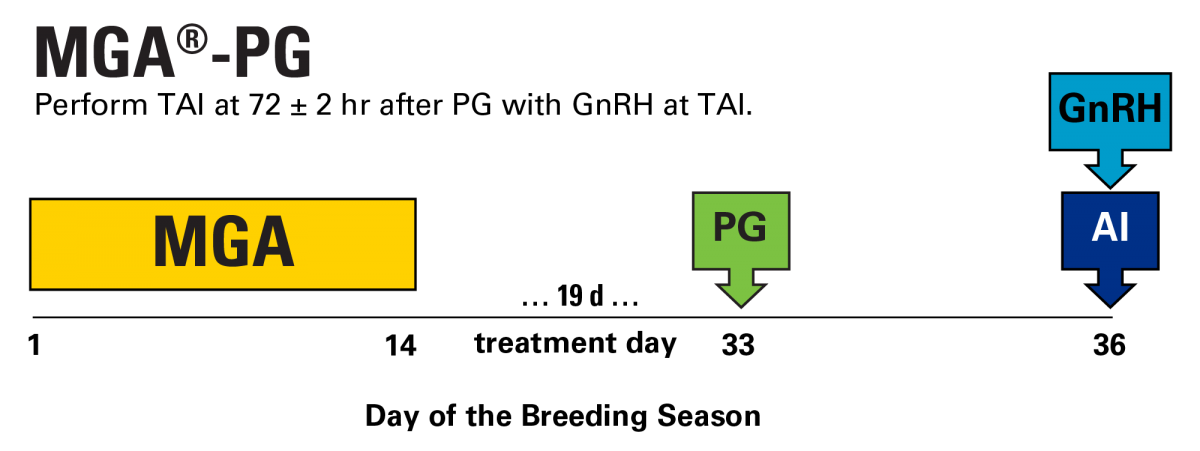Olivia Amundson SDSU Extension Cow/Calf Field Specialist
With the word, “uncertainty” looming in many of our heads, it’s a prime time to consider strategic management approaches to maintain an operation’s bottom line. With calving season quickly coming to an end and breeding season right around the corner, it’s time to look at how money can be invested intelligently and outcomes can be beneficial.
Consider Lower Input Estrus Synchronization Protocols
With the rising costs of certain feed supplements, uncertainty in the markets, and fear of the unknown, using an estrus synchronization protocol may be the last thing on producers’ minds. However, the decisions that are made now determine profitability in the future. While many may be pinching pennies, there is still opportunity to incorporate estrus synchronization without breaking the bank. Protocols such as Timed-Artificial Insemination or Select Synch Protocols incorporating a CIDR, an internal progestin product, are very effective but do add costs to the enterprise. Protocols using MGA or a 1-shot prostaglandin are options that can be used to successfully synchronize females with a reduced up-front investment.
Using MGA Protocol
Melengestrol acetate (MGA) is an orally active progestin that can be added to feed. Historically it has been used in both cow and heifer synchronization protocols. Unfortunately, MGA is not labelled for use in cows. Nonetheless, MGA can be used successfully in heifer synchronization protocols. The feed additive is fed at a rate of 0.5 mg/head/day and is used to suppress estrus and therefore prevent ovulation. It is important when feeding MGA that it is evenly distributed to each individual to ensure estrus will be suppressed in the entire breeding group.
Success factors for MGA:
- Meager bunk management = poor results (heifers need to consume MGA in a short period of time – Do not mix it in a daily amount of silage)
- Important to have adequate bunk space
- Need to acclimate heifers to MGA supplement (if using a top-dress)
- Feeding time consistency
- May have inconsistent response to MGA in fat heifers

MGA – Natural Service
In this protocol, MGA is fed for 14 days and bulls are turned out 10 days later. Heifers will come into estrus approximately 48 hours following MGA withdrawal, however, due to the length of time receiving an oral progestin, this estrus will result in an aged ovulatory follicle and subsequent conception will be minimal.

MGA – PG
The MGA-PG protocol incorporates MGA and prostaglandin F2 alpha (PG; i.e. Lutalyse, Estrumate). Prostaglandin F2 alpha is a luteolytic compound normally found in the uterus to lyse the corpus luteum (CL). MGA is fed for 14 days followed by a PG injection 19 days later. Heifers are then heat detected and artificially inseminated.

1-Shot Prostaglandin
One shot prostaglandin protocol can be used in both cow and heifer herds, however, consider cyclicity of females prior to using this protocol. Cows in adequate body condition and greater than 60 days postpartum are the best candidates for this protocol. While this protocol has a decent response rate in cows, heifers that have not reached puberty will not respond to this protocol. It’s also important to remember when using this protocol that females need to be in adequate body condition and greater than 60 days postpartum for optimal results.
This protocol is mainly used for natural service (turn bulls out), however, it can be modified to incorporate artificial insemination. On day 0 bulls are turned out and on day 5 all cows are given an injection of PG. Due to immaturity of the CL from day 0-5; females who were successfully bred on those days will not abort their pregnancy because PG cannot successfully lyse the CL before day 5. Again, those who incorporate heat detection and artificial insemination can give the PG injection on day 5 to those females who have not yet displayed estrus.
Achieving Maximum Protocol Success
It is important to remember that success of these protocols is reliant on multiple factors. Breeding females need to be in adequate body condition score (5 – 6), feed quality needs to be high, and postpartum length is adequate enough for the female to have resumed normal estrus cycles (approximately 60 days, longer for heifers). When using a natural service protocol, ensure bull to cow ratio is appropriate for age of bulls, 1:25 is standard for a mature bull. Finally, ensure herd bulls have received a breeding soundness exam, are in adequate body condition score (6-7) and are being fed high quality feed. Pregnancy rate will reflect how well the breeding herd is managed. Table 1 displays each protocol, their cost, pregnancy rate and range. When strict adherence to protocols is completed, maximum protocol success can be achieved.
| Protocol | Cost per head | Pregnancy Rate | Range |
|---|---|---|---|
| MGA – Natural Service | $10.80 | 50% | 47-71% |
| Select Synch + CIDR | $49.74 | 50% | 31-70% |
| MGA – PG | $35.97 | 60% | 40-70% |
| 7-day CIDR + PG | $46.84 | 50% | 39-87% |
| 1-Shot Prostaglandin (AI) | $34.90 | 40% | 21-90% |
*Price includes cost analysis of labor, synchronization product, and semen costs
*Price does not represent estrus detection response, feed and yardage, or pasture charge
